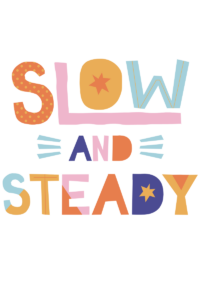A school librarian should be every teacher’s best friend. They can help you gather a range of texts to meet the needs of diverse students. You’re probably wondering, what does this have to do with math? The short answer EVERYTHING!
Why We Need Math Read Alouds?
Children’s books and even poems are useful tools for teaching math. They help promote a high level of student engagement by sparking their imaginations. Read- alouds help put math concepts in context. And who doesn’t want that?
So What’s Holding Us Back From Incorporating Math Literature In Our Classrooms?
Departmentalization-
Many schools have taken the route of departmentalizing. Students will have a teacher for ELA and another one for Math. When this happens, it may seem awkward to handle read alouds if you are the person designated to math. Kudos to the departmentalization teams that promote cross-curricular exposure. That, by far, is an excellent idea. However, if you and your team don’t go that route, math teachers, you should not feel uncomfortable incorporating reading into your sessions.
Time-
Most teachers feel especially in upper elementary that there is just no time to read a story. I believe this is when you have to weigh out the importance of the other activities you are doing. Do the students need yet again another worksheet to complete? Or can those 15 minutes be used to put some math into context? Which of those choices can help them make further connections? (Read- Worksheets: The Good, The Bad & The Ugly)
But I understand that timing is a factor. Therefore, I am not recommending a new read-aloud every day. As a math coach, my suggestion has always been to begin your unit by having a literal pile of math read alouds on whatever topic you’re focusing on. That pile can be used in different ways. Some suggestions are listed below.
1.Classroom Libraries/Centers
We need to have a math section in our classroom libraries. (Read-What You Really Need For The Perfect Classroom Set-Up)
It can be a center, or station students run through. That way students have the choice of picking their book. The read- alouds placed there can also connects to the topic you’re currently exploring.
Want to extend that activity? Have students create a different version of the story they just read. Rewrite it in their own way.

2.Parent Connection
Want to get parents involved? Have them come in to read a math book. It enforces a positive math view. Just make sure to talk to the parents beforehand. You don’t want them reading a math book and declaring they don’t get it or they hate math. Remind them it’s a Growth Mindset zone. (Read- What Parents Need To Know About Math)

3.Homework
Books aren’t just physical. YouTube houses a variety of math read-alouds. This is an excellent homework assignment if students have access to technology. Assign them a story through there. Pro tip- listen to the story first. There are also websites like https://gregtangmath.com/resources Greg Tang gives access to the books he has created. Students can read the story as well as solve some problems. And one of my favorite math apps, Bedtime Math, does the same. (Read- My Favorite Math Apps)

We know there are just some students who prefer reading over math or math over reading. When you incorporate read aloud into your lessons, you get the kids who love books excited, and you give the students who necessarily might not enjoy reading was to appreciate stories.
I recommend at least one read-aloud for every unit, and yes, that’s for you upper elementary teachers too. Start with one, what’s the worst that can happen?
With your busy schedules, it might be difficult finding time to seek out quality pieces of literature. I’ve created a free resource chock-full of them. Check out my free resources page. I made sure to keep in mind that they are mathematically appropriate, grade-level appropriate, and culturally relevant. Those pieces matter when choosing math literature.
Now, many classrooms cannot afford to build their school or classroom library. There are several grants that you can apply for to help with that. Check out https://teach.com/what/teachers-change-lives/grants-for-teachers/
Want to check out more?
MEMBERSHIP SITE:
https://zennedmath.com/online-courses/
FACEBOOK GROUP: Zenned Math Teachers
https://www.facebook.com/groups/zennedmathteachers/
YOUTUBE CHANNEL: Zenned Math
https://www.youtube.com/channel/UC5njH_5LoK6G67BvZecGfnw?
WANT ME IN YOUR INBOX? Sign up for my newsletter
https://view.flodesk.com/pages/5efc876dcaabca0028b95eb5
DISCLAIMER: Some links included in this blog might be affiliate links. If you purchase a product or service with the links that I provide, I may receive a small commission. There is no additional charge to you!

